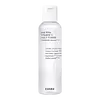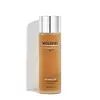What's inside
What's inside
 Key Ingredients
Key Ingredients

 Benefits
Benefits

 Concerns
Concerns

 Ingredients Side-by-side
Ingredients Side-by-side

Actinidia Chinensis Fruit Extract
EmollientHylocereus Undatus Fruit Extract
Skin ConditioningSalix Alba Bark Water
AstringentPyrus Malus Fruit Water
MaskingButylene Glycol
HumectantNiacinamide
Smoothing1,2-Hexanediol
Skin ConditioningEthyl Hexanediol
SolventSodium Lactate
BufferingWater
Skin ConditioningGlycolic Acid
BufferingAllantoin
Skin ConditioningPanthenol
Skin ConditioningAdenosine
Skin ConditioningBetaine Salicylate
AntimicrobialAscorbyl Glucoside
AntioxidantWater
Skin ConditioningGlycerin
Humectant1,2-Hexanediol
Skin ConditioningNiacinamide
SmoothingBetaine
HumectantButylene Glycol
HumectantPanthenol
Skin ConditioningGlycereth-25 PCA Isostearate
EmulsifyingXanthan Gum
EmulsifyingDipotassium Glycyrrhizate
HumectantMalt Extract
Skin ProtectingCitrus Paradisi Peel Oil
MaskingSodium Hyaluronate
HumectantCaprylic/Capric Triglyceride
MaskingHydrolyzed Hyaluronic Acid
HumectantBeta-Glucan
Skin ConditioningPhellinus Linteus Extract
Skin ConditioningCaprylyl Glycol
EmollientCitrus Aurantium Dulcis Peel Oil
MaskingSodium Acetylated Hyaluronate
HumectantJuniperus Mexicana Oil
MaskingCoriandrum Sativum Fruit Oil
MaskingMentha Viridis Leaf Oil
AstringentLactobacillus/Rice Ferment
Skin ConditioningMentha Piperita Leaf Extract
Skin ConditioningMorinda Citrifolia Fruit Extract
Skin ConditioningPrunus Mume Fruit Extract
HumectantAdenium Obesum Leaf Cell Extract
MaskingCucumis Sativus Fruit Extract
EmollientCentella Asiatica Extract
CleansingCamellia Sinensis Leaf Extract
AntimicrobialActinidia Chinensis Fruit Extract
EmollientAloe Arborescens Leaf Extract
MoisturisingCarum Petroselinum Extract
Skin ConditioningBrassica Oleracea Acephala Leaf Extract
HumectantAdansonia Digitata Seed Extract
Skin ConditioningMelaleuca Alternifolia Leaf Extract
PerfumingCynara Scolymus Leaf Extract
Skin ConditioningPhyllostachys Nigra Leaf Extract
Skin ConditioningBrassica Oleracea Gemmifera Extract
AstringentCucumis Melo Fruit Extract
Skin ConditioningCitrus Aurantifolia Fruit Extract
Skin ConditioningYeast Beta-Glucan
Skin ConditioningLaminaria Japonica Extract
Skin ProtectingWater, Glycerin, 1,2-Hexanediol, Niacinamide, Betaine, Butylene Glycol, Panthenol, Glycereth-25 PCA Isostearate, Xanthan Gum, Dipotassium Glycyrrhizate, Malt Extract, Citrus Paradisi Peel Oil, Sodium Hyaluronate, Caprylic/Capric Triglyceride, Hydrolyzed Hyaluronic Acid, Beta-Glucan, Phellinus Linteus Extract, Caprylyl Glycol, Citrus Aurantium Dulcis Peel Oil, Sodium Acetylated Hyaluronate, Juniperus Mexicana Oil, Coriandrum Sativum Fruit Oil, Mentha Viridis Leaf Oil, Lactobacillus/Rice Ferment, Mentha Piperita Leaf Extract, Morinda Citrifolia Fruit Extract, Prunus Mume Fruit Extract, Adenium Obesum Leaf Cell Extract, Cucumis Sativus Fruit Extract, Centella Asiatica Extract, Camellia Sinensis Leaf Extract, Actinidia Chinensis Fruit Extract, Aloe Arborescens Leaf Extract, Carum Petroselinum Extract, Brassica Oleracea Acephala Leaf Extract, Adansonia Digitata Seed Extract, Melaleuca Alternifolia Leaf Extract, Cynara Scolymus Leaf Extract, Phyllostachys Nigra Leaf Extract, Brassica Oleracea Gemmifera Extract, Cucumis Melo Fruit Extract, Citrus Aurantifolia Fruit Extract, Yeast Beta-Glucan, Laminaria Japonica Extract
 Reviews
Reviews

Ingredients Explained
These ingredients are found in both products.
Ingredients higher up in an ingredient list are typically present in a larger amount.
1,2-Hexanediol is a synthetic liquid and another multi-functional powerhouse.
It is a:
- Humectant, drawing moisture into the skin
- Emollient, helping to soften skin
- Solvent, dispersing and stabilizing formulas
- Preservative booster, enhancing the antimicrobial activity of other preservatives
Actinidia Chinensis is the extract from kiwi fruit. It contains antioxidants in the forms of Vitamin C and polyphenols.
Antioxidants help protect your skin against free-radicals. Free-radicals are molecules that may damage your skin.
Butylene Glycol (or BG) is used within cosmetic products for a few different reasons:
Overall, Butylene Glycol is a safe and well-rounded ingredient that works well with other ingredients.
Though this ingredient works well with most skin types, some people with sensitive skin may experience a reaction such as allergic rashes, closed comedones, or itchiness.
Learn more about Butylene GlycolNiacinamide is a multitasking form of vitamin B3 that strengthens the skin barrier, reduces pores and dark spots, regulates oil, and improves signs of aging.
And the best part? It's gentle and well-tolerated by most skin types, including sensitive and reactive skin.
You might have heard of "niacin flush", or the reddening of skin that causes itchiness. Niacinamide has not been found to cause this.
In very rare cases, some individuals may not be able to tolerate niacinamide at all or experience an allergic reaction to it.
If you are experiencing flaking, irritation, and dryness with this ingredient, be sure to double check all your products as this ingredient can be found in all categories of skincare.
When incorporating niacinamide into your routine, look out for concentration amounts. Typically, 5% niacinamide provides benefits such as fading dark spots. However, if you have sensitive skin, it is better to begin with a smaller concentration.
When you apply niacinamide to your skin, your body converts it into nicotinamide adenine dinucleotide (NAD). NAD is an essential coenzyme that is already found in your cells as "fuel" and powers countless biological processes.
In your skin, NAD helps repair cell damage, produce new healthy cells, support collagen production, strengthen the skin barrier, and fight environmental stressors (like UV and pollution).
Our natural NAD levels start to decline with age, leading to slower skin repair, visible aging, and a weaker skin barrier. By providing your skin niacinamide, you're recharging your skin's NAD levels. This leads to stronger, healthier, and younger looking skin.
Another name for vitamin B3 is nicotinamide. This vitamin is water-soluble and our bodies don't store it. We obtain Vitamin B3 from either food or skincare. Meat, fish, wheat, yeast, and leafy greens contain vitamin B3.
The type of niacinamide used in skincare is synthetically created.
Learn more about NiacinamidePanthenol is a common ingredient that helps hydrate and soothe the skin. It is found naturally in our skin and hair.
There are two forms of panthenol: D and L.
D-panthenol is also known as dexpanthenol. Most cosmetics use dexpanthenol or a mixture of D and L-panthenol.
Panthenol is famous due to its ability to go deeper into the skin's layers. Using this ingredient has numerous pros (and no cons):
Like hyaluronic acid, panthenol is a humectant. Humectants are able to bind and hold large amounts of water to keep skin hydrated.
This ingredient works well for wound healing. It works by increasing tissue in the wound and helps close open wounds.
Once oxidized, panthenol converts to pantothenic acid. Panthothenic acid is found in all living cells.
This ingredient is also referred to as pro-vitamin B5.
Learn more about PanthenolWater. It's the most common cosmetic ingredient of all. You'll usually see it at the top of ingredient lists, meaning that it makes up the largest part of the product.
So why is it so popular? Water most often acts as a solvent - this means that it helps dissolve other ingredients into the formulation.
You'll also recognize water as that liquid we all need to stay alive. If you see this, drink a glass of water. Stay hydrated!
Learn more about Water